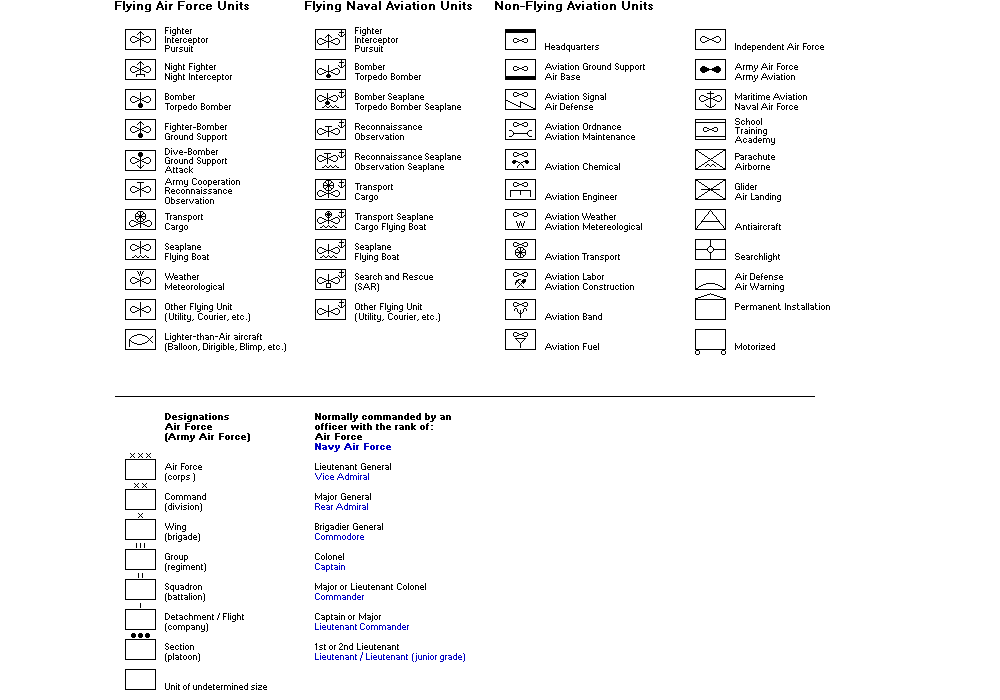(+) Placed to the right of the symbol indicates that a unit is substantially reinforced.
(–) Placed to the right of the symbol indicates that a substantial part of the unit is detached.
It may also be used to indicate that subordinate elements are operating at extended distances from,
and semi-independently of the parent unit.
Please note that some countries did not have a separate, independent aviation arm, and all air units were part of the army.
In other countries there was no separate aviation arm belonging to the navy. This
meant that the aircraft, flying units, and crews indicated under 'Naval Aviation' were in fact owned
by the air force.
The designations of flying units in the various air forces varied, as did the rank of
the commanders of the various echelons. Air arms owned or even influenced by the army
tended to have the same designations and ranks as ground units, possibly but not necessarily
with the prefix 'Flying ...' or 'Air ...'.
Rank is not necessarily the final indication of the size of the unit, or even the authorized
rank of the commander. Take the Greek Air Force in October 1940 for example, where
company-sized flying units were commanded by lieutenant colonels as well as majors and captains.
On the other hand a low state of mobilization might mean that many officers commanding were one
or two ranks under the authorized ones. For example, on 7 December 1941 not one USAAF Air Group
(regiment-sized unit) was commanded by a full colonel. In other air forces, in some cases, captains
commanded regiment or even brigade-sized units.
The number of aircraft in a unit varied. Company-sized flying units had 6 to 12
aircraft. Battalion-sized flying units 12 to 24 aircraft. Regiment-sized units had 20
plus. One the other hand, units with small aircraft (one or two crew members) tended to have more
aircraft in them than those with large aircraft (which, correspondingly, had more engines, larger
aircraft crews, more numerous ground maintenance men, etc.). In addition, it is sometimes difficult
to determine whether the numbers found in sources were 'authorized' as opposed to 'on hand' aircraft,
and which may or may not have included 'reserve', 'sidelined', 'in maintenance', etc. equipment.
